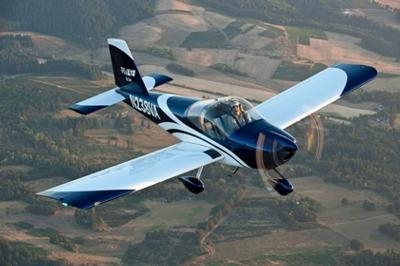Wed, Jan 18, 2017
You’ll See Lots Of Light Sport Aircraft At The Light Sport Expo In Sebring, FL
With the Light Sport Expo being held next week in Sebring, FL it’s an appropriate time to ask the question; exactly what is a light sport aircraft (LSA)?

Anyone that holds a sport pilot certificate, or anyone that is exercising sport pilot privileges, is limited to flying a light sport aircraft. If a pilot is not limited to sport pilot privileges, an LSA may be a perfect choice for an aircraft, but it’s not a required choice. LSA is a definition of an aircraft; it is not a specific certification type.
The definition of a light sport aircraft is found in the Federal Aviation Regulations Part 1.1. Here is an abridged version of that description:
- A maximum takeoff weight of not more than 1,320 pounds for aircraft not intended for operation on water; or 1,430 pounds for an aircraft intended for operation on water.
- A maximum airspeed in level flight with maximum continuous power of not more than 120 knots.
- A maximum stalling speed or minimum steady flight speed without the use of lift-enhancing devices of not more than 45 knots at the aircraft's maximum certificated takeoff weight.
- A maximum seating capacity of two persons, including the pilot.
- A single, reciprocating engine, if powered.
- A fixed-pitch propeller or ground-adjustable propeller.
- A fixed-pitch, semi-rigid, teetering, two-blade rotor system, if a gyroplane.
- A non-pressurized cabin, if equipped with a cabin.
- Fixed landing gear, except for an aircraft intended for operation on water or a glider.
Any aircraft the fits this description is okay for a sport pilot and is often referred to as an LSA. However, the type of FAA certification the aircraft holds can make a difference in the ownership of the aircraft. The most common LSA certification categories you will be considering as candidates for owning are:
- An FAA type certificated aircraft such as a Cub, Champ, Ercoupe, or some other “classic.”
- A special light sport aircraft (S-LSA) that is certified under the new light sport rules.
- An experimental aircraft that could come in several sub categories.
Any one of these aircraft certification types may have pros and cons to ownership but they all could qualify for sport pilot operation. The LSA buyer needs to learn how the certification affects ownership. Because the issues defined around light sport aircraft cross the boundaries between pilot certification, aircraft certification, and aircraft maintenance requirements, it may require talking to different people and doing a bit of research to get all the details in line.
With all the excitement about the new regulation changes that affect options for maintaining the requirement of a third class medical, don’t forget that nothing has changed for those who are exercising sport pilot privileges. The medical requirement for sport pilot is that the operator holds a valid state driver’s license. While taking advantage of some of the changes such as reviewing an online medical awareness training course and having regular doctor checkups is always a good idea, it is not required for sport pilots.
(Images from file)
More News
Terminal Radar Service Area Airspace surrounding designated airports wherein ATC provides radar vectoring, sequencing, and separation on a full-time basis for all IFR and participa>[...]
Very High Frequency (VHF) The frequency band between 30 and 300 MHz. Portions of this band, 108 to 118 MHz, are used for certain NAVAIDs; 118 to 136 MHz are used for civil air/grou>[...]
“From approximately November 2021 through January 2022, Britton-Harr, acting on behalf of AeroVanti, entered into lease-purchase agreements for five Piaggio-manufactured airc>[...]
Also: Virtual FLRAA Prototype, IFR-Capable Autonomous A/C, NS-32 Crew, Golden Dome Missile Defense Bombardier announced that the first production Global 8000 successfully completed>[...]
Aero Linx: The 1-26 Association (Schweizer) The Association’s goal is to foster the helpfulness, the camaraderie, and the opportunity for head-to-head competition that is fou>[...]
 ANN's Daily Aero-Term (05.29.25): Terminal Radar Service Area
ANN's Daily Aero-Term (05.29.25): Terminal Radar Service Area ANN's Daily Aero-Term (05.30.25): Very High Frequency (VHF)
ANN's Daily Aero-Term (05.30.25): Very High Frequency (VHF) Aero-News: Quote of the Day (05.30.25)
Aero-News: Quote of the Day (05.30.25) Airborne 05.23.25: Global 8000, Qatar B747 Accepted, Aviation Merit Badge
Airborne 05.23.25: Global 8000, Qatar B747 Accepted, Aviation Merit Badge ANN's Daily Aero-Linx (05.30.25)
ANN's Daily Aero-Linx (05.30.25)



